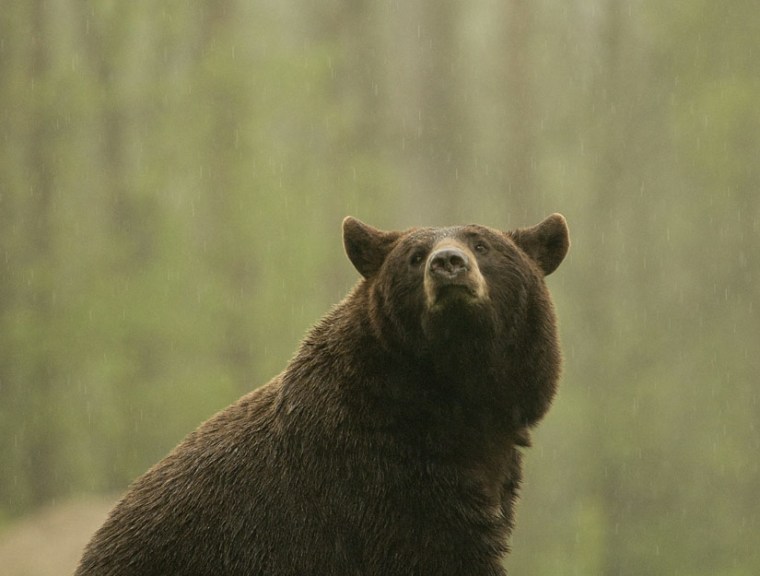Wolves, whales, sea otters, lions, sharks, bears and more: perched atop the food chain, these animals intrigue and inspire us, and sometimes scare us.
Now new research highlights a bigger role for these animals as crucial managers of ecosystems. Large top predators (and some top plant-eaters) keep systems in balance in ways that control human disease, wildfires, carbon emissions and more, while benefiting agriculture, water resources and forestry, among others. We deplete them at our peril.
"I think it's in many ways the most important paper in conservation that's been published in a decade or so," said Peter Kareiva, chief scientist at the Nature Conservancy, who was not a part of the study. "Sometimes we lose sight of the fact that all species aren't created equal and some are much, much more important than others."
"That should change how we invest our money, how we manage, what we do. Instead of blindly protecting all species we could go after those really important ones," he said.
"What this article highlights are some new discoveries that the loss of predators or the loss of large herbivores can lead to wholesale transformation of ecosystems and the way they function," said Oswald Schmitz of Yale University, who was also not a part of the new study, published today in the journal Science. "That's a paradigm-changing way to look at things."
At the same time "Predators are disproportionately vulnerable to human impacts because they need large spaces," he said. "We're in a quandary right now because we're making all these new scientific discoveries about predators, and at the same time we're losing them faster than many other species."
A team of about 20 leading ecologists gathered examples from land and sea worldwide to make their point. Here are some of the examples.
In Yellowstone National Park, where wolves' delisting as an endangered species remains a contested issue, researchers found that in the absence of wolves, elk increase in number and begin to graze without fear of predation, damaging the shores of streams and changing their courses.
They prevent aspen and willow seedlings from taking hold and reduce the shady habitat needed for stream fish to thrive. Reintroducing wolves has brought back young aspen and allowed willow saplings to take hold along stream beds in the park, which provides habitat for beavers, songbirds and fish.
Meanwhile, in the Pacific Ocean, sea otters allow kelp forests and the mussels and fish that live nearby to thrive by keeping sea urchins from overgrazing the kelp.
In an example from Africa, the researchers point to rinderpest, a viral disease also known as "cattle plague," which decimated populations of wildebeest and buffalo. Without these large herbivores, vegetation overgrew the area, turning grasslands into shrublands and leading to more frequent, more intense wildfires.
An extensive control program eradicated rinderpest from East Africa in the 1960s, and wildebeest levels returned to what is thought were their earlier levels by the 1980s, changing the landscape back and decreasing fires again.
Also in Africa, the loss of lions and leopards has boosted populations of olive baboons who then come in greater contact with humans, seeking food. This increased contact has led to increases in intestinal parasites in both the baboons and the people living near them.
Vultures have been implicated in controlling rabies and anthrax and predatory fish in controlling malaria and allowing lakes to soak up more carbon dioxide through similar mechanisms, the researchers report. They list more.
"They put them all together in one place and all of a sudden it's an eye-opener and you say, 'Oh my god, look at this,'" Kareiva said.
As some of these examples highlight, reintroducing top predators reverses the changes caused by their loss. "The world can be fixed in many cases. I think that's the good news," said study lead author Jim Estes.
On the other hand, sometimes the changes are a one-way street and the systems change in ways that prevent recovering to the same point, even if the top-of-the-food-chain animals are reintroduced.
"I'm not proposing that we reintroduce big predators to the whole world," Estes added. "I think the point of this is that we need to think about these things as we think about the whole future of the world and how we manage our resources."
For one thing, the findings suggest a different way of looking at conservation. "For the last 20 years, much of conservation has focused on biodiversity hotspots," Kareiva said. "That means you make an inventory of what lives in a place and you protect places that have the most species living in them."
The new paper suggests a new approach might work better, he said. "The issue is not where do the most species live, but what are the apex consumers and what do they need to survive."
